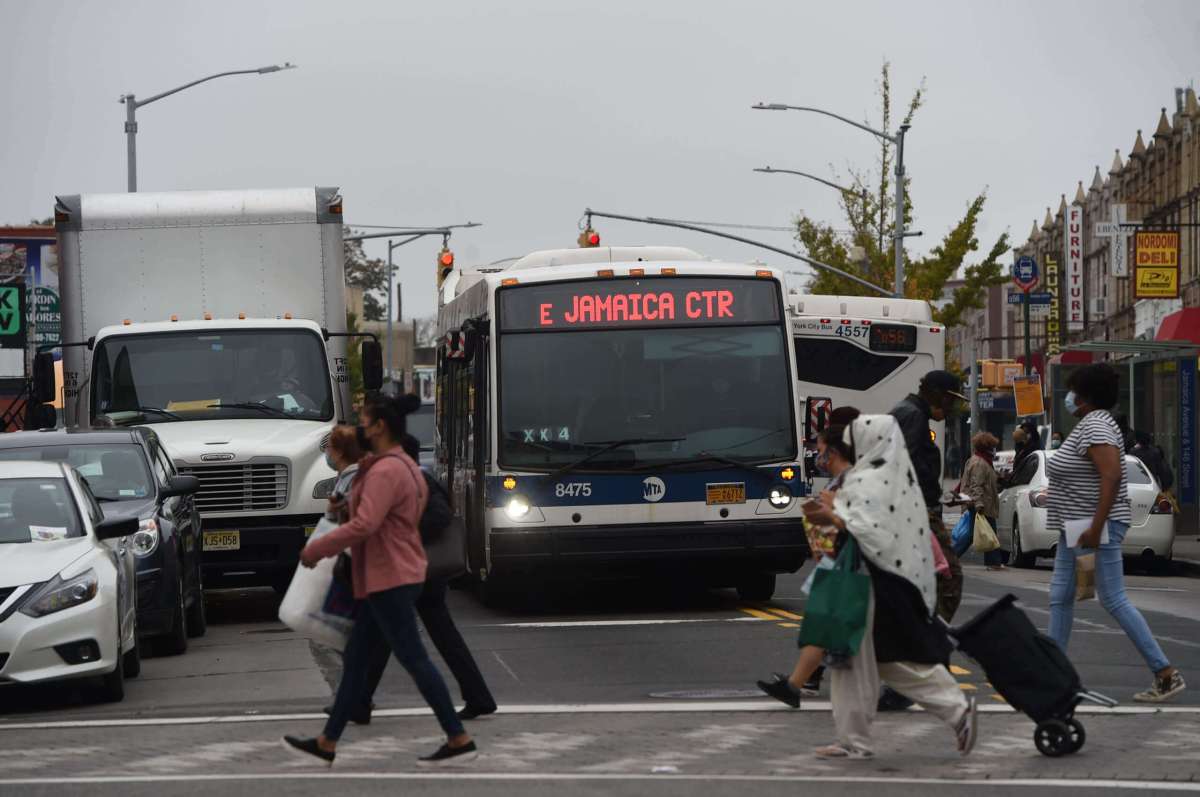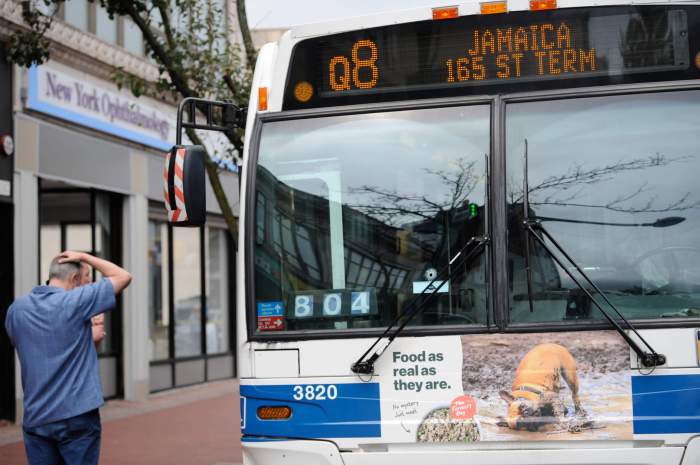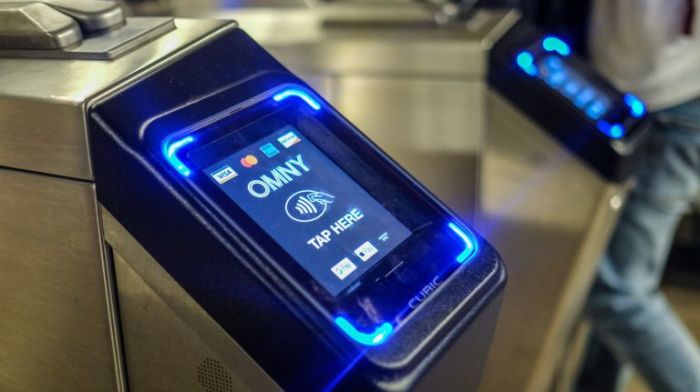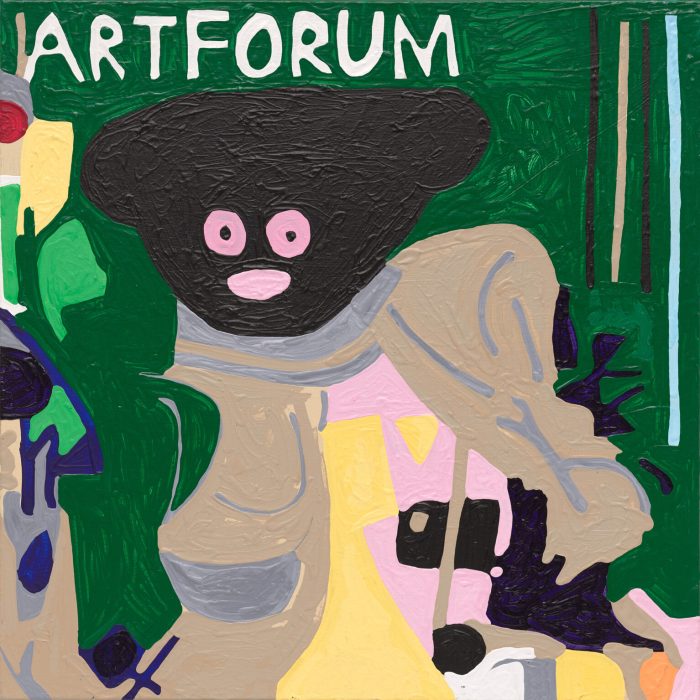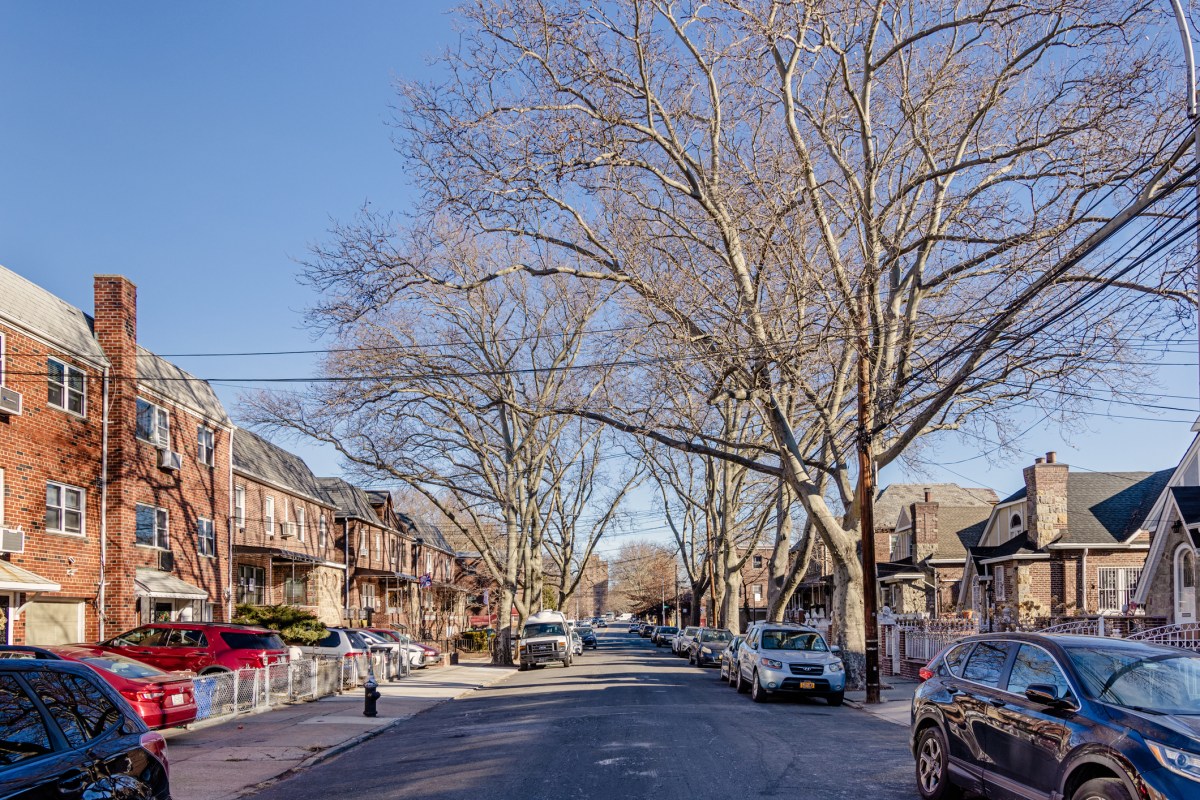The MTA finally released a revised draft proposal for its Queens bus network redesign Tuesday, overhauling the agency’s ambitious 2019 plans that were put on ice due to the pandemic.
The much-anticipated revamp of a revamp will bring changes to nearly every bus line in an effort to speed up commutes in the World’s Borough, adding more routes while axing or consolidating others.
“Queens may be the most important of the five borough bus redesigns, because Queens has historically had less subway service relative to its size and population than the other boroughs,” said Metropolitan Transportation Authority Chairperson and CEO Janno Lieber during a press conference in Jamaica on March 29.
“A bus is mass transit in many parts of Queens. It is the only way, in many parts of Queens, to connect to the subway system and the commuter rail system,” the transit guru added.
The MTA hit the brakes on its borough-by-borough bus network redesigns in the spring of 2020 amid the outbreak of the COVID-19 pandemic, including its then-draft plan for Queens, which was released just months earlier in December.
The agency restarted the efforts in August, beginning with the Bronx, which is slated to get a new bus network this summer.
At the time, officials pitched the old draft plan as wiping the slate clean with fewer but more straightforward routes to serve the nearly 700,000 average weekday riders in Queens pre-COVID.
It aimed to update the “confusing labyrinth” of lines that cover the borough, where buses often still travel along the paths of long-gone trolleys or competing private bus companies predating the MTA.
Bus speeds, ridership, and on-time performance were all trending down before the pandemic and the Big Apple’s buses had recently earned the distinction of being the slowest of any big city in the nation.
The 2019 plan was seen as the most ambitious of the three borough redesigns released at the time (following Staten Island’s express bus network and the Bronx) for trying to completely redraw the network and provide simpler system and less routes.
Officials at the time even gave the new routes “QT” prefixes instead of “Q” to signal a clean break from the old system and get riders away from the routes that they knew.
The proposal met with vocal backlash at community meetings, and locals feared the loss or changes to bus service.
The new plan still has a lot of changes, but instead of replacing lines MTA adjusts most of them and maintains their “Q” label to make them more familiar to riders.
MTA officials told amNewYork Metro that the negative feedback — including 11,000 comments, an unprecedented amount for any recent agency project — showed that the original scheme of starting from scratch with an all-new network was just a road too far for Queens riders.
The revisions of the plan now offer a total of 85 routes for the borough, up from the current 82 and from the 77 in the old draft.
Twenty routes will be brand new and 11 routes will be “retired,” most of the which will either be part of a new route or combined with other existing ones, according to the MTA.
Seventeen lines will be extended, seven shortened, five will be combined with one or more existing routes, and only one line — the Q70 SBS — will remain unchanged.
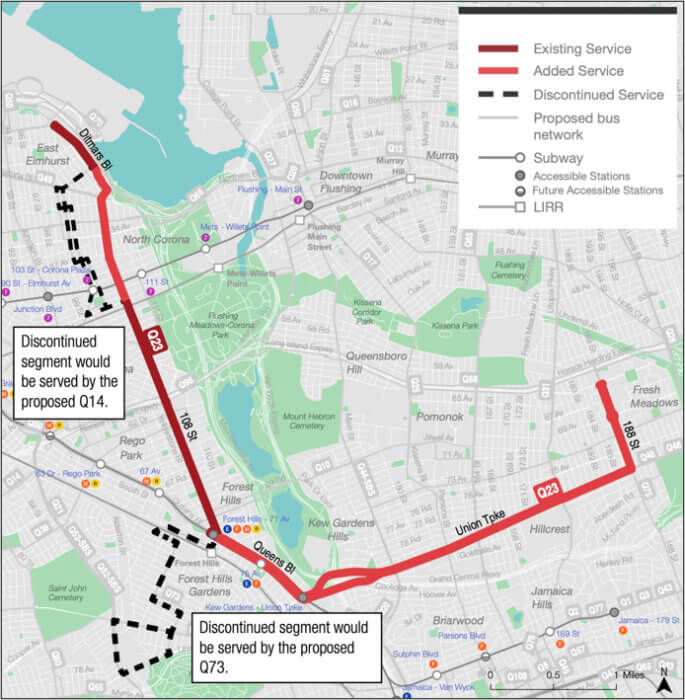
The agency wants to cut bus stops in order to space them further apart, from about 850 feet on average to around 1,400 feet, which transit officials say will reduce commuting time. Each stop MTA axes could save 20 seconds of travel, officials estimate.
The Queens bus network will on balance lose 1,685 stops in the plan, representing 33.7% of the entire borough network, according to MTA spokesperson Eugene Resnick.
Under the old draft plan, the agency had planned to go further and cut the number of stops in half, the rep added.
For comparison up in the Bronx, officials plan to get rid of about 400 stops as part of the redesign, which makes up some 20% of that borough.
Queens is home to several ends of subway lines, where many riders transfer to a bus to bring them to their destination deeper into the borough, and the MTA will introduce so-called “Rush” service for buses that feed riders to subway lines for further out.
For example a revised Q84 would shuttle straphangers from Laurelton to Jamaica Center’s E, J, and Z trains nine minutes faster.
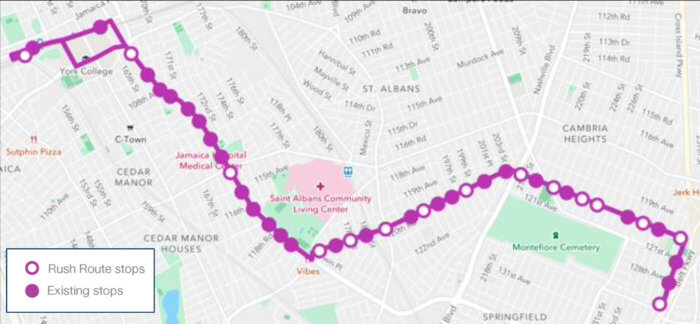
The express bus network will lose a route, the QM3, add a new one, and consolidate two existing services, the QM10 and the QM40.
The old draft plan proposed to halt express buses on Sundays due to low ridership, but the new proposal still includes some Sunday service, MTA officials said.
The MTA’s calculations for the new plan are still based on pre-pandemic ridership numbers and trends, but Queens has seen some changes to the street layout over the past two years.
Former Mayor Bill de Blasio opened two sets of busways in the borough during the pandemic, one on Main Street in Downtown Flushing and another on Jamaica and Archer Avenues.
The MTA is still working with the city’s Department of Transportation on implementing bus priority projects at 49 corridors, including busways and bus lanes, for stretches such as 21st Street, Queens Boulevard, Woodhaven Boulevard, Rockaway Beach Boulevard, and Northern Boulevard.
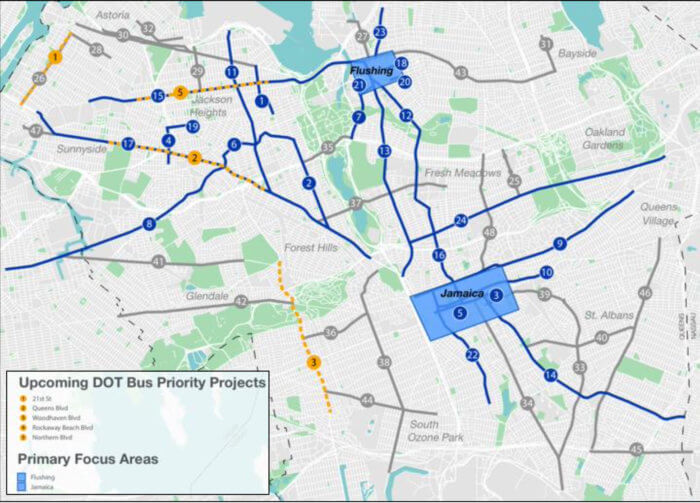
The new plan would also no longer be “revenue-neutral,” and the agency expects to spend more on the network overall than it currently does, officials told amNewYork Metro.
MTA will launch a three-month public outreach campaign for the draft, with 14 virtual feedback sessions starting April 18.
The agency plans to include the feedback into its final plan, which must be approved by the MTA board before the changes take effect.
The public can also post comments online through an interactive online map which shows the current and proposed stops in detail, and Queens Borough President Donovan Richards encouraged residents to get familiar with the plans and have their voices heard.
“Queens families rely heavily on bus service that can often lack in efficiency and reliability, especially in our many transit deserts, so it could not be more important that we get this redesign of our borough’s bus network right,” said Richards in a statement. “If our communities are fully engaged and involved in this process, getting it right is what we’ll achieve.”



